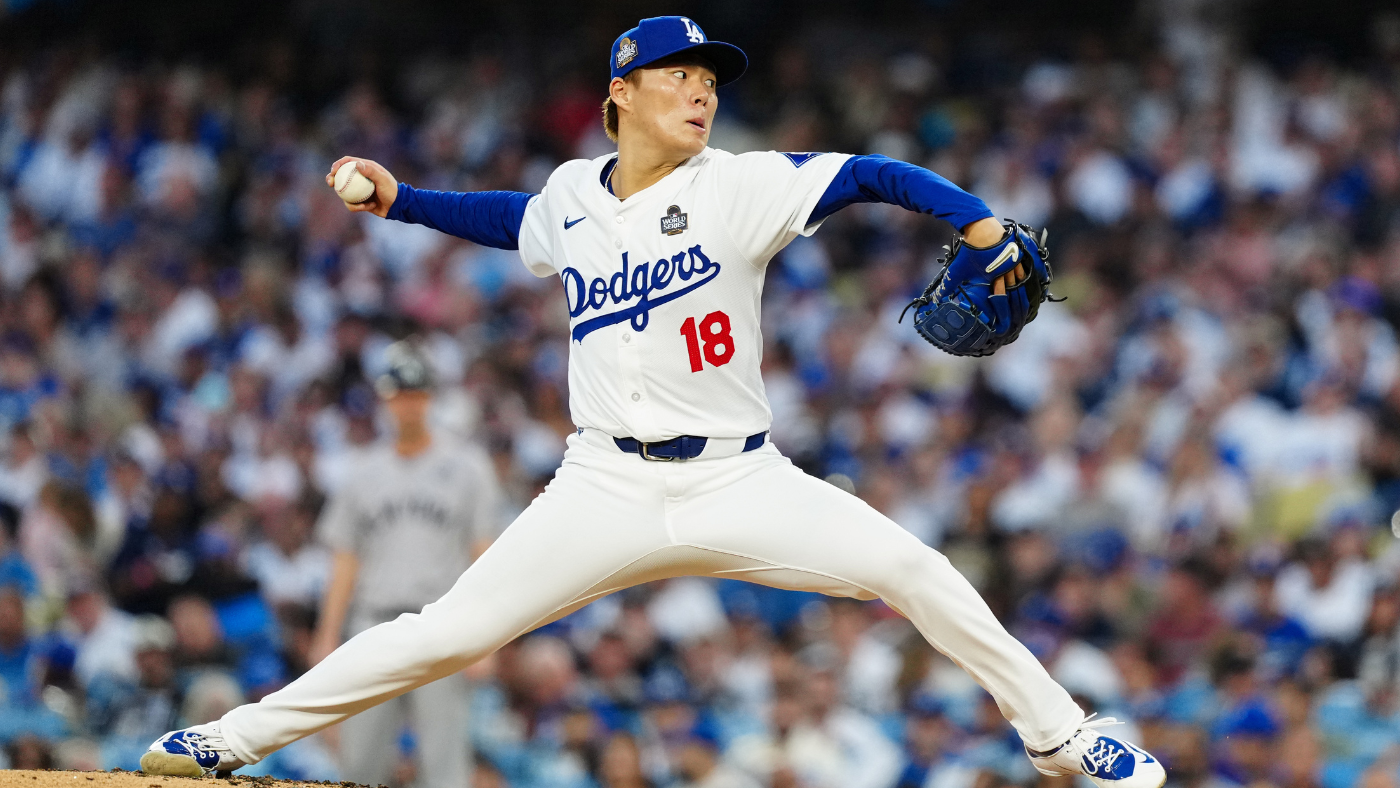
Los Angeles Dodgers right-hander Yoshinobu Yamamoto made his first career World Series start on Saturday night in Game 2 against the New York Yankees. Yamamoto delivered, throwing 6 1/3 one-run innings and surrendering one run on a hit and two walks. He struck out four of the 22 batters he faced, including Aaron Judge twice.
It was a start, in other words, that validated Yamamoto’s standing as one of the best pitchers in the world, as well as the Dodgers’ decision over the winter to sign him to a $325 million pact before he had thrown a single pitch in a Major League Baseball game.
Yamamoto, just 26, was limited by injury to 18 starts this season. When he was hearty and hale, he tallied a 3.00 ERA (129 ERA+) and a 4.77 strikeout-to-walk ratio. That Yamamoto was so effective when right should come as no surprise. Mind you, this is the same pitcher who finished his career in Japan’s Nippon Professional Baseball league by winning three consecutive Most Valuable Player and Eiji Sawamura Awards. (Think of the Sawamura as the NPB equivalent to MLB’s Cy Young Award.)
Just what made Yamamoto’s Game 2 outing so productive? For starters, he was able to generate a game-high 12 swinging strikes over the course of his appearance. Four of those came on his primary offering, a four-seamer that checked in at 95.6 mph. His other top pitches, a splitter (the best pitch in his arsenal) and a curveball, combined for five additional swinging strikes.
Yamamoto’s fastball-splitter pairing is particularly effective because the two share horizontal movement profiles. The difference between them is wholly in velocity and vertical movement, with the fastball rising and the splitter dropping. Take a look at this overlay that demonstrates why batters have difficulty doing damage on the split:
As for Yamamoto’s high-spin curveball, during the regular season it generated more than 33% whiffs and held opponents to a .214 average. Those marks were second among his most-used pitches, behind only the splitter. Interestingly, Yamamoto did break out eight sliders on Saturday; he threw a total of 48 during the regular season.
Arguably the most surprising part of Yamamoto’s night was that he worked into the seventh inning and threw 86 pitches. He hadn’t done either of those things — work that deep, in inning or pitch count — since June, prior to his trip to the injured list.
If Game 2 proves to be Yamamoto’s final start of the year — and mind you, he would be lined up to pitch next in Game 6 — then it was a quality appearance to go out on. Otherwise, the Dodgers can only hope that he has one more contract-validating appearance left in him for 2024. If so, he could end up with a different title afterward: World Series champion.

